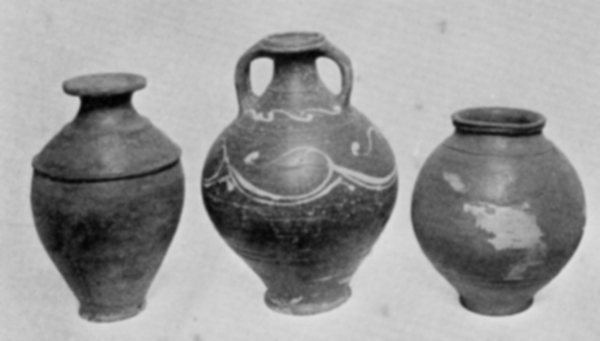
Today’s image for Day 312 of the VM_365 project shows three Roman pottery vessels found and excavated by James Beck and Antoinette Powell-Cotton in pits on the foreshore of Minnis Bay, Birchington in 1938.
The vessel on the left hand side of the image was found in a square shaped pit and is described as a ‘grey Belgic vase’ by Major Powell-Cotton and G. F. Pinfold in their report and catalogue of the site in 1939. This late Iron Age/Early Roman vessel was found along with the base of a 1st century rough cast pottery beaker and a fragment of Quern stone.
The vessel shown in the centre of the picture is described as a two handled wine jar of New Forest type. A wide range of wheel thrown fine wares were produced in the New Forest in the 3rd and 4th century, sometimes decorated as is the case with this vessel, and are generally found distributed across southern Britain. The vessel was found complete, in a pit along with some other pottery and a fragment of the upper part of a quernstone.
The vessel on the right was found in a pit beneath the millstone that featured in yesterday’s, Day 311 post for VM_365. The vessel was described as a fine red ware pot with the remains of decoration with white slip.
Some of the pits may be the remains of the bottoms of well as three contained springs. The pottery found in the pits dates from the early 1st century to the 3rd or 4th century indicating that this area had been a focus of activity by the Romans for at least 300 years.
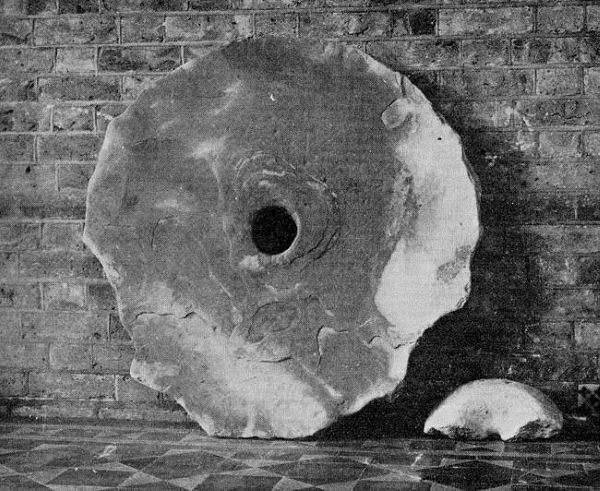
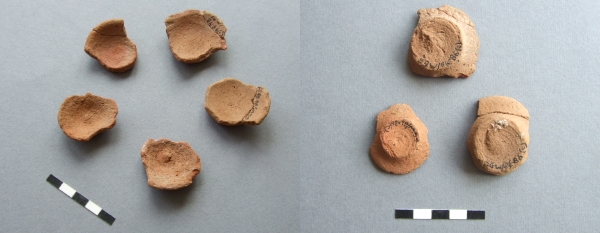 The image for Day 304 of the VM_365 project shows two images of a group of small ceramic vessels of a type that have been called tazza, a term derived from the Italian word for a cup. The image on the left shows the upper surface of the vessels, the right hand image shows the bases of three of them.
The image for Day 304 of the VM_365 project shows two images of a group of small ceramic vessels of a type that have been called tazza, a term derived from the Italian word for a cup. The image on the left shows the upper surface of the vessels, the right hand image shows the bases of three of them.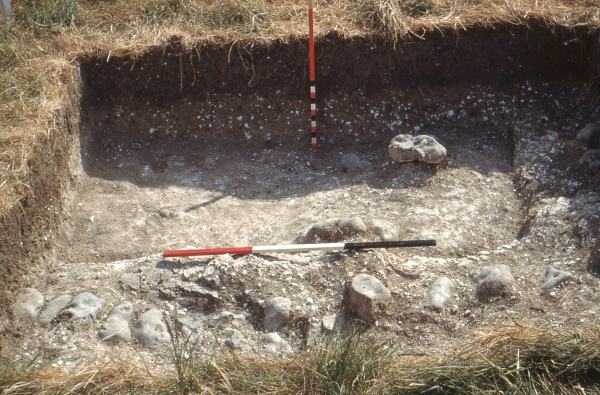
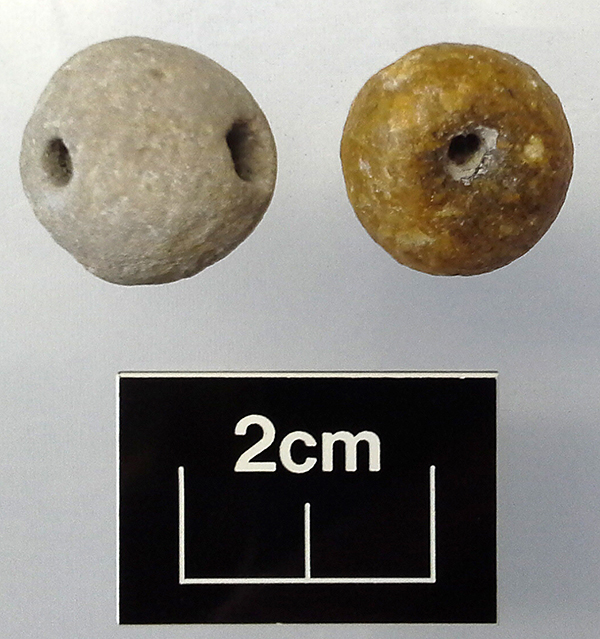 Today’s image for Day 300 of the VM_365 project shows two Late Iron Age/Roman beads from the
Today’s image for Day 300 of the VM_365 project shows two Late Iron Age/Roman beads from the 
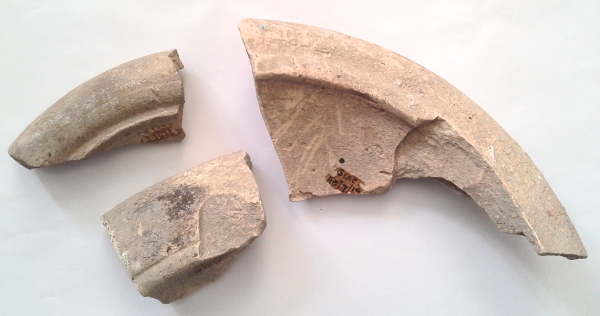 The image today, for Day 296 of the VM_365 project, is of three sherds of Roman Mortaria, giving a closer look at
The image today, for Day 296 of the VM_365 project, is of three sherds of Roman Mortaria, giving a closer look at 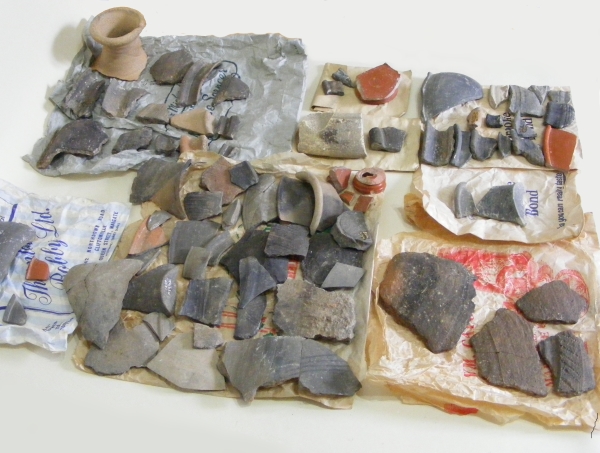
 The image for Day 281 of the VM_365 project shows a copper alloy cast Roman Spoon-Probe found during the 1999 excavation season of the Roman villa at Minster.
The image for Day 281 of the VM_365 project shows a copper alloy cast Roman Spoon-Probe found during the 1999 excavation season of the Roman villa at Minster.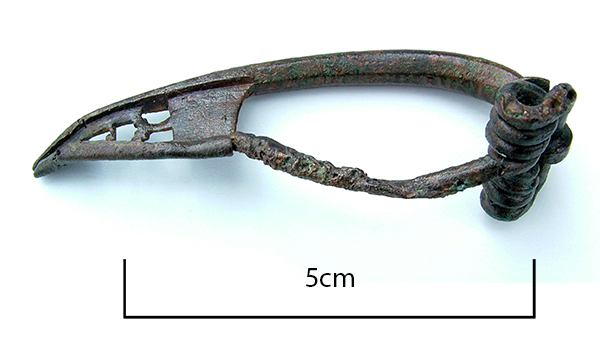 The image for Day 280 of the VM_365 project shows a Bow Brooch or Fibula of late Iron Age or Early Roman date, which was found in 1992 when trial trenching was carried out between Monkton and Minster in advance of the expansion of the old single lane road into a dual carriageway.
The image for Day 280 of the VM_365 project shows a Bow Brooch or Fibula of late Iron Age or Early Roman date, which was found in 1992 when trial trenching was carried out between Monkton and Minster in advance of the expansion of the old single lane road into a dual carriageway.